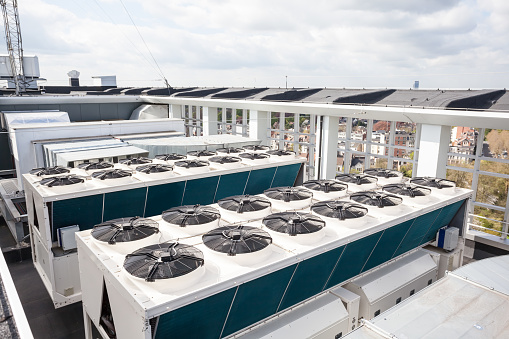Nearly one year after ratifying the Kigali Amendment to the Montreal Protocol on Substances that Deplete the Ozone Layer, the Environmental Protection Agency announced two additional actions to further this initiative under the American Innovation and Manufacturing Act (AIM). The Kigali Amendment is an international agreement aimed at phasing down the production and consumption of hydrofluorocarbons (“HFCs”) by 80-85 percent by 2047. It also seeks to avoid up to .5 °C of global warming by 2100.
By way of background, HFCs are used in applications such as air conditioning, refrigeration, fire suppression, solvents, foam blowing agents, and aerosols and are thousands of times more potent than carbon dioxide. AIM was enacted on December 27, 2020 and authorizes the EPA to address HFCs in three key areas: production and consumption of listed HFCs, management of HFCs and their substitutes, and transition to next-generation technologies through sector-based restrictions. AIM phases down HFCs by achieving a 40-percent reduction by 2024 and an 85-percent reduction by 2036.
EPA’s first action is a final rule, also known as the Technology Transitions rule, aimed at accelerating the ongoing transition to more efficient and climate-safe technologies in new refrigeration, heating and cooling systems and other products by restricting the use of HFCs where alternatives are already available. It restricts the use of certain HFCs in over 40 types of foams aerosol products, and refrigeration, air conditioning, and heat pump equipment. It also bans HFCs in certain equipment and sets limits on global warming potentials of the HFCs that can be used in each subsector. Compliance dates for the final rule ranges from 2025 to 2028 and applies to both imported and domestically manufactured products. It is estimated that this final rule will provide additional cumulative greenhouse gas emission reductions of at least 83 million metric tons of carbon dioxide equivalent from 2025 to 2050.
The second action is a proposed rule to better manage and reuse existing HFCs, including by reducing wasteful leaks from equipment and supporting a growing American industry for HFC recycling and reclamation. The purpose of the proposed rule is to help minimize HFC leaks across the lifespan of existing equipment, such as air conditioners and refrigeration systems, while also maximizing the reuse of existing HFCs. It includes requirements for repairing leaky equipment, use of automatic leak detection systems on large refrigeration systems, use of reclaimed HFCs for certain applications, recovery of HFCs from cylinders prior to disposal, and a container tracking system. It is estimated that the proposed rule will prevent at least an additional 142 million metric tons of carbon dioxide equivalent from 2025 to 2050. The EPA will accept comments on the proposed rules for 60 days after publication and will then hold a public hearing.

